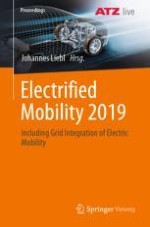Die inhaltlichen Schwerpunkte des Tagungsbands zu den ATZlive-Veranstaltungen Grid Integration of Electric Mobility und Electrified Mobility 2019 sind u.a. folgende Fragen: Wann können Stromnetze volatile Wind- und Solarenergie speichern? Wie sind die Stromübertragungsnetze ausgelegt? Können Spitzenlastsituationen abgedeckt werden? Die Tagung ist eine unverzichtbare Plattform für den Wissens- und Gedankenaustausch von Forschern und Entwicklern aller Unternehmen und Institutionen, die Antworten auf diese Fragen suchen.
Der InhaltMobilität: Kundenfreundliche, vernetzte und intermodale Systeme.- Fahrzeuge und Antriebe: Klima- und emissionsneutrale Technik.- Energiespeicher: Batterien und Wasserstoff im neuen Antriebsportfolio.
Die ZielgruppenFührungskräfte und Ingenieure bei Automobilherstellern, Zulieferern, Entwicklungsdienstleister - Forschungseinrichtungen und Hochschulen - Mitarbeiter bei Telekommunikationsdiensten, IT-Unternehmen, Energieversorgern und Netzbetreibern - Alle Einrichtungen, die sich mit Elektromobilität beschäftigen
Der Veranstalter
ATZlive steht für Spitzenqualität, hohes Niveau in Sachen Fachinformation und ist Bestandteil der Springer Fachmedien Wiesbaden GmbH, ein Teil von Springer Nature. Hier wird unter einem Dach das Know-how der renommiertesten Wirtschafts-, Wissenschafts- und Technikverlage Deutschlands vereint.
